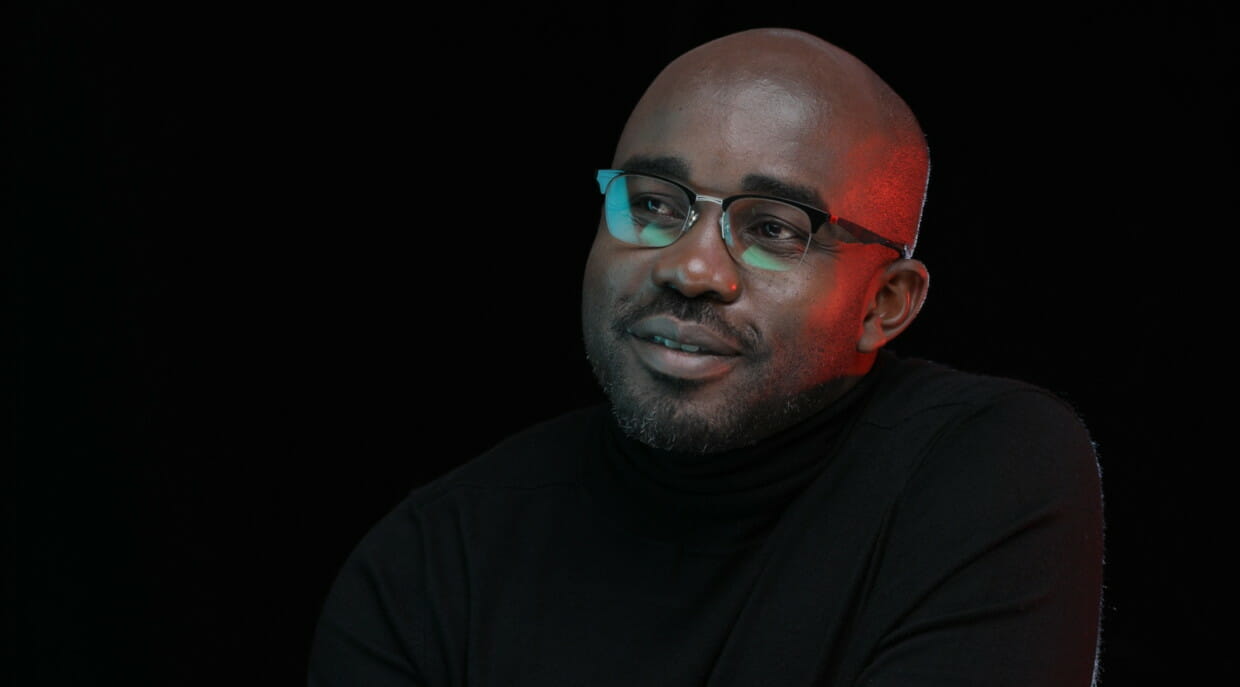
18 August 2021
With 800 episodes, Selina has paved the way for other Swahili telenovelas
Anyone who’s paid attention to local TV in the last three years will agree that Selina has been a gamechanger. While it wasn’t the first of its kind – the Swahili telenovela – when it premiered in January 2018, Selina revived the almost forgotten genre and paved the way for other, similar projects that were to follow. Armed with a tale as old as time – a Cinderella story, star-crossed romance but with local flair – and charming leads (Celestine Gachuhi, a newcomer at the time, and Pascal Tokodi), Selina showed the local TV industry what was possible, not only for creators but for fans too, and they were rewarded for it.
In the three years that Selina has been on the air, it has won back-to-back Kalasha Awards for Best TV Drama in 2018 and 2019, no small feat for director and producer Reuben Odanga. “It’s one of my biggest highlights because no other Kenyan TV show has been able to do that,” he says.
Watch the interview
Odanga, who’s also helmed other Swahili projects like Saida, Nuru and Nira, reveals that not many believed that a project like Selina could be a success on Kenyan TV. He commends Maisha Magic East and MultiChoice for taking what he calls a “bold initiative” that has paid off in more ways than one.
“Selina has broken the glass ceiling, and it plays a very important role in the industry because it’s been a first in many ways,” Odanga says.
Currently in its sixth season, Selina just clocked its 800th episode, another first in Kenya, but its biggest brag still remains the viewership it has been able to net since season one.
On Maisha Magic East, Selina still remains the number one most-watched show. On Showmax, where it’s available to binge from season one to the current season six, Selina has remained in the top 10 most-watched shows in Kenya for the past three years.
The secret to success
One of the things that have contributed to this impressive viewership is the fact that Selina runs daily. “This consistency is what audiences have been yearning for,” says Odanga.
Of course, other factors come into play. Like the fact that Selina is an aspirational show that relates to audiences in the low-end markets while also appealing to those in the high-end. “It’s like making a show for people who live in Kangemi, but we don’t mind if those in Karen watch it too,” Odanga says.
Celestine Gachuhi on playing Selina for six seasons
Odanga and his team never anticipated the magnitude of Selina’s popularity. “None of us could tell how this story would pan out. I’d be lying if I said we had a plan or strategy to make it work,” he admits. “But we were clear that we just wanted to do a very good show, and everyone, from the cast to the crew, bought into the vision. We did a lot of research and pre-production work.”
Being a new concept, the first season, which had only 60 episodes (compared to later seasons with 260 episodes), had a lot of challenges. “But even then, if you look at those challenges within the industry and what other people were doing, we were still way above average. And so, when the show premiered, it just took off because it was different. We tried a lot of things because it kept growing; it was way beyond what we’d imagined.”
One cannot talk about Selina’s success without acknowledging the role that social media played in getting it to the top. As the show became more popular, it garnered a loyal social media fan base not only in Kenya but also in Rwanda, Tanzania and Uganda. These fans changed how viewers interact with local content on social media.
On being the first
To put this into perspective, according to Odanga, Selina was the first Kenyan show to host a Facebook live chat with the cast, and also the first to have numerous fan pages (the show currently has over ten fan pages with over 500,000 cumulative followers on Facebook alone).
Pascal Tokodi on Selina’s legacy
“Some episodes have garnered over 2000 comments immediately after they aired,” says Odanga. “It’s very encouraging to see how audiences relate to it. And in this day and age of social media, people are able to give feedback immediately.”
But social media is a double-edged sword, and Selina has had its fair share of criticisms or “very down moments” as Odanga puts it. For a show with as many episodes as Selina, criticism is inevitable, especially in Kenya where this concept (numerous episodes) is new, Odanga explains. “We are now at 800 episodes. Our audience has never interacted with this kind of programming before.”
It’s easy to see how the audience would find this challenging but Odanga doesn’t see this style of storytelling fading in the near future.
“Many shows that are coming after Selina will be like 1000 or 1500 episodes. I think that’s where TV is headed. Shows like Pete and Kina are pretty much heading in the same direction, which is a good thing for the industry,” Odanga says.
For now, Odanga and his team face the challenges as they come, even as he shoulders the biggest burden – that he has to create a template for every other person who comes after him. “I think I can write a book now, ‘How to Produce a High-end Telenovela’ that includes what works, what doesn’t work, what the audience wants to see, what they don’t. For a long time, creatives have been writing for themselves, but with Selina, I’ve learnt to write for the audience.”
All episodes of Selina S1-6 are available on Showmax.
More like this

Sparky Xulu channels real emotion as Zenzele in Empini Season 2
Sparky Xulu talks about his role as Zenzele in the Showmax Original series Empini S2, a role he says is shaped by personal loss. Catch new episodes every Tuesday on Showmax.

Youngins stars tease the final season at Showmax Youth Day event
Youngins stars Kealeboga Masango and Toka Mtabane recently confirmed that Season 3 will be coming to Showmax. They reflect on its cultural impact and teased what viewers can expect in the upcoming season.

Where to see the cast of Shaka iLembe S1-2 on Showmax
From Nomzamo Mbatha as Queen Nandi to Lemogang Tsipa as King Shaka Zulu and Thembinkosi Mthembu as King Dingiswayo, see the cast of Shaka iLembe in some of their other acclaimed roles on Showmax.

Showmax Gen Z stars speak out for Youth Day 2025
The young stars of Youngins, Soft Life, and Adulting share what Youth Day means to them and how their roles are influencing their generation. See them all on Showmax.

Doc S1
A powerful medical drama based on an incredible true story. Dr. Amy Larsen (Molly Parker) loses her memory during a car accident and must return to being an intern as she rebuilds her life.

16 medical dramas to stream in an entertainment emergency
From New Amsterdam to The Good Doctor to House, these compelling medical shows are all streaming on Showmax.

Summertide S1
An exhilarating South African multi-generational drama following the Field family and those who cross their paths – each with their own secrets and desires.

5 explosive moments from Empini Season 2 so far
Empini Season 2 hits hard with betrayals, secrets, and twists that keep viewers hooked. Stream it now on Showmax, with new episodes every Tuesday.
Untied, coming to Showmax
The Real Housewives of Durban S5, now streaming
More Mzansi gold

Sparky Xulu channels real emotion as Zenzele in Empini Season 2
Sparky Xulu talks about his role as Zenzele in the Showmax Original series Empini S2, a role he says is shaped by personal loss. Catch new episodes every Tuesday on Showmax.

Youngins stars tease the final season at Showmax Youth Day event
Youngins stars Kealeboga Masango and Toka Mtabane recently confirmed that Season 3 will be coming to Showmax. They reflect on its cultural impact and teased what viewers can expect in the upcoming season.

Minnie Ntuli talks about joining The Real Housewives of Durban S5
Minnie opens up about joining Season 5 of The Real Housewives of Durban, and where things stand with Londie. New episodes land Friday on Showmax.

Where to see the cast of Shaka iLembe S1-2 on Showmax
From Nomzamo Mbatha as Queen Nandi to Lemogang Tsipa as King Shaka Zulu and Thembinkosi Mthembu as King Dingiswayo, see the cast of Shaka iLembe in some of their other acclaimed roles on Showmax.
Latest stories

Teko Modise: Brazilians ready to show African flair on global stage

Showmax PL has you covered at the FIFA Club World Cup

Showmax Premier League weekly watchlist:17-22 June 2025

Must-watch trailer for upcoming Showmax talk show, Untied

16 medical dramas to stream in an entertainment emergency

Celebrate World Oceans Day with My Penguin Friend

10 top cop shows for Donut Day

Antoine Semenyo’s secret weapon? His unshakeable faith

Showmax and DStv celebrate the legacy of Presley Chweneyagae

Stream Julio Torres’s fantasy film Problemista on Showmax

100 Foot Wave S1-3

10 top shows and movies to watch with Pride

Showmax and Capitec join forces to offer big discounts on streaming vouchers

Wild Wild Space and 10 more titles to join your space race






